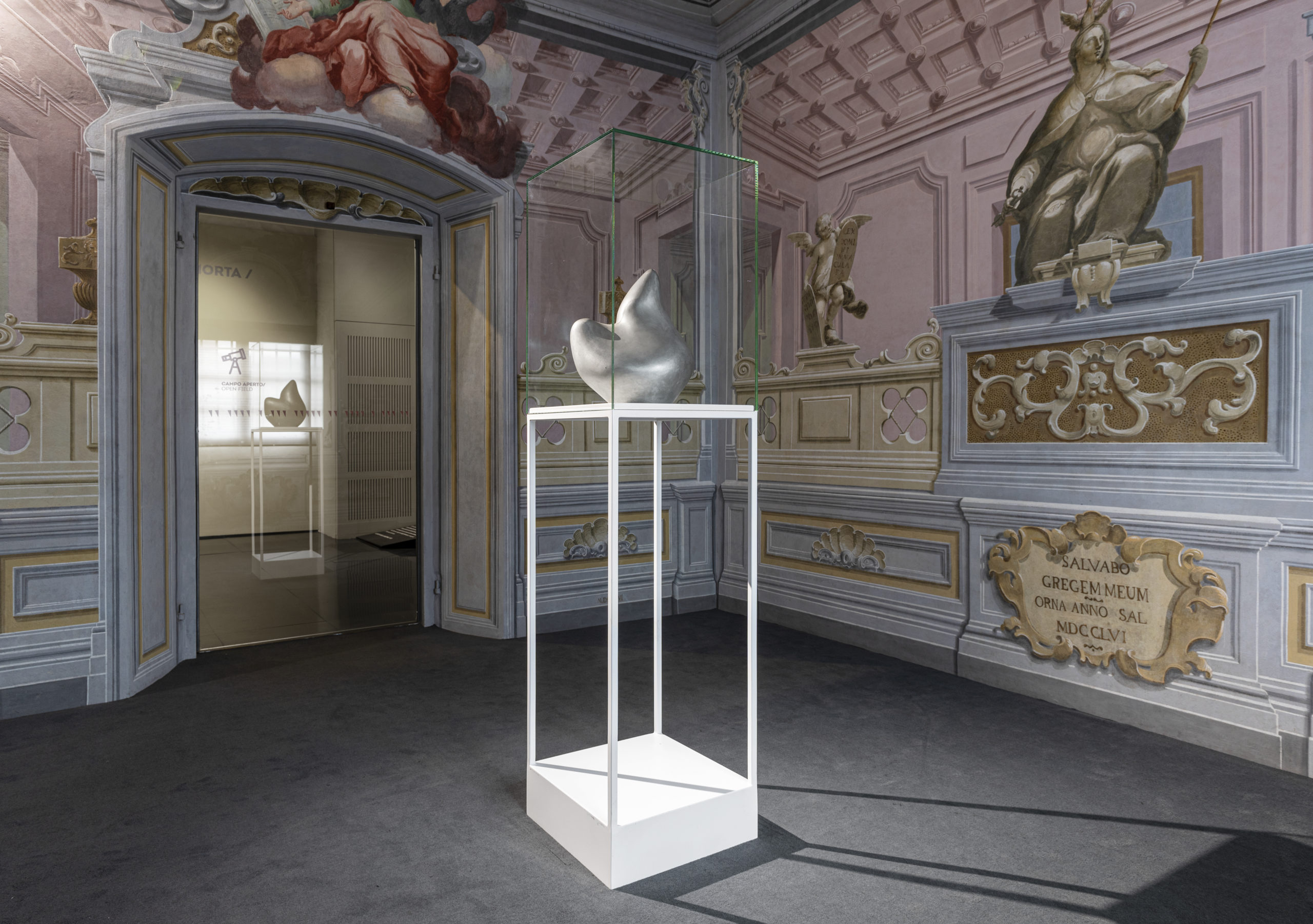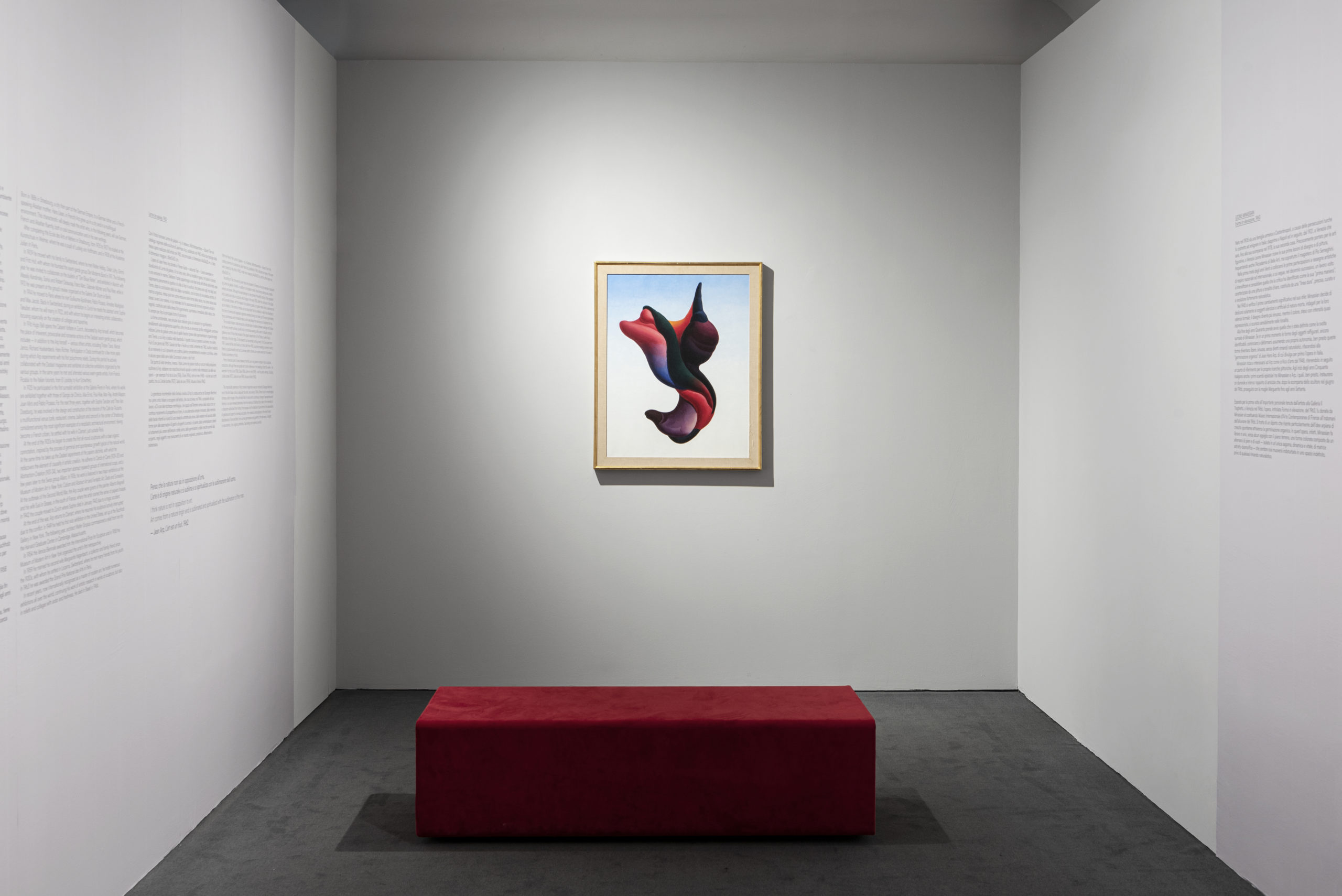Where and when
From
To
Museo Novecento
A work by Jean Arp, one of the great masters of the twentieth century, resurfaces from the deposits of the Florentine Civic Museums. Once again, the virtuous relationship between the Museo Novecento and the academic world has given rise to an important rediscovery: Larme de galaxie (1962), a small masterpiece donated by the Alsatian artist to the city of Florence in the aftermath of the dramatic flood of 1966, comes back to light after about three years of study and research conducted by Emanuele Greco, curator of the exhibition Jean Arp. Larme de galaxie.
Exhibition Hours
Museo Novecento
Monday – Sunday
11:00 am
–
8:00 pm
Thursday
Closed
The work, unique in Arp’s sculptural production, was donated to the city of Florence thanks to the generosity of the artist’s wife, Marguerite Arp-Hagenbach, who in 1967, in the aftermath of the flood, responded with this significant tribute to appeal launched to contemporary artists by Carlo Ludovico Ragghianti.
The absolute protagonist of the exhibition is therefore Larme de galaxie, a duralumin sculpture created by Arp in 1962, which, almost sixty years after its only appearance at the Schwarz Gallery in Milan (1965), is finally visible again in a public exhibition.
The sculpture is placed in a close dialogue with the 1963 painting Form in elevation by Leone Minassian (1905-1978) and ideally is linked to the great marble Il pastore dell’essere from 1963 by Alberto Viani (1906-1989), currently located in the courtyard of the Oblate Library in Florence.
The two artists, in addition to having been admirers and friends of the great Alsatian master, were significantly influenced by him, as their organic artistic research reveals.
The presence in the exhibition of Minassian, the true trait d’union between the great sculptor and Italy from the 1940s to the 1960s, finds further justification within the very history of the donation of the work Larme de galaxie. Thanks to the documentary reconstruction of the entire story it was in fact possible to understand that it was Minassian, supported by Viani, who convinced the artist’s wife, who recently passed away, to donate a work of her husband to the city of Florence for the then constituting International Museum of Contemporary Art (MIAC).
The exhibition therefore allows not only to admire a work of the Florentine heritage of which traces had been lost, but also to write a new page of history, centered on the links and affinities between various protagonists of Italian and international art of the twentieth century.
The work, belonging to a late phase of the artist’s activity, fully represents the poetics and style of Arp in sculpture, which began in the early 1930s, after the conclusion of the Dada and Surrealist phases, with the search for an abstract plastic, with an organic matrix, understood that is not as an imitation of the forms of nature, but as nature itself: that is a material, in which the similarities to the forms of animal and vegetable organisms remained strong, but made up of the same germinating, spontaneous force and immediate, of nature, which was always for Arp the main source of inspiration.
The rounded shapes, made sinuous by a delicate play of variations between swellings and hollows on the very smooth surface, as well as by a harmonious waving profile, seem to indicate Larme de galaxie as one of those fresh shots conducted by Arp in the late phase – to which we can to ascribe, for comparison, among the other works, Fruit d’une pierre of 1959, Gueule de fleur and Feuille sur cristal, both of 1960 – of the organic experiments carried out in the Thirties, and precisely of the moment in which there is a predominantly plastic scheme ovoid and curvilinear, as in some works of the series of Human Concretions or Fruits.
The irrepressible greatness of Arp’s creative imagination is an aspect that was also noticed by Giuseppe Marchiori, one of the first Italian critics to deal with the artist’s work, who wrote in 1964: “There is such a morphological richness, which ranges in the unlimited field of nature with a continuous change of perspectives and themes, in an ever-renewed alternative, from the memory of childhood fairy tales to the memories of a classicism subtracted from history, from escapes into the absolute of pure forms to the observations of gestures and aspects of animals and plants, from celestial contemplations to the most human disturbances of love and flesh, from surreal germinations and growths to the discovery, in objects or monuments, of an original, prehistoric, fascinating and mysterious world».
Jean Arp
Hans (or Jean, in French) Arp was born in Strasbourg in 1886. After completing the Ecole des Arts et Métiers in Strasbourg, he studied at the Kunstschule in Weimar, and at the Académie Julian in Paris. In 1909 he moved to Switzerland, where in 1911 he founded, together with Walter Helbig, Oskar Lüthy, Gimmi and Fritz Huf, the avant-garde group Der Moderne Bund. The following year he collaborated on the bulletin of “Der Blaue Reiter”, and exhibited in Munich, together with other famous artists (Kandinsky, Klee, Delaunay…). He meets the abstract artist Sophie Taeuber in Zurich, whom he will marry in 1922, with whom he begins an interesting artistic collaboration, focusing especially on the creation of collages and tapestries. In 1916 the Cabaret Voltaire opens in Zurich, the place of the irreverent actions of the Dadaist avant-garde group; during these years Arp experiments with his first polychrome reliefs, actively collaborates with the Dadaist magazines and exhibits at the group’s collective exhibitions. In the same years he met and attended various avant-garde artists (Picabia, Schwitters…). In 1925 some of his works were exhibited at the first surrealist exhibition at the Galerie Pierre in Paris. He collaborates on the project of the Café de l’Aubette, a multifunctional place in the center of Strasbourg, in a neoplastic style. In the 1920s he created the first all-round sculptures with a clear organic and natural connotation. In 1936, he exhibited in two major exhibitions at the Museum of Modern Art in New York, and in 1949 his first US solo exhibition was held at the Buchholz Gallery in New York. In 1954 he received the International Sculpture Prize from the Venice Biennale, and in 1963 the Grand Prix National des Arts. He continues his artistic research work with passion and freshness in works of sculpture, reliefs and collages, continuing to exhibit all over the world, until 1966, the year of his death in Basel.
Artist
Jean Arp
Strasbourg, 1886 – Basel, 1966
Artistic Direction
Sergio Risaliti
Curated by
Emanuele Greco
Scientific Coordination
Eva Francioli
Francesca Neri
Press
Costanza Savelloni
Elisa Di Lupo
Social
Giulia Spissu
Visual Identity
Archea Associati
Ph Credits
Leonardo Morfini



